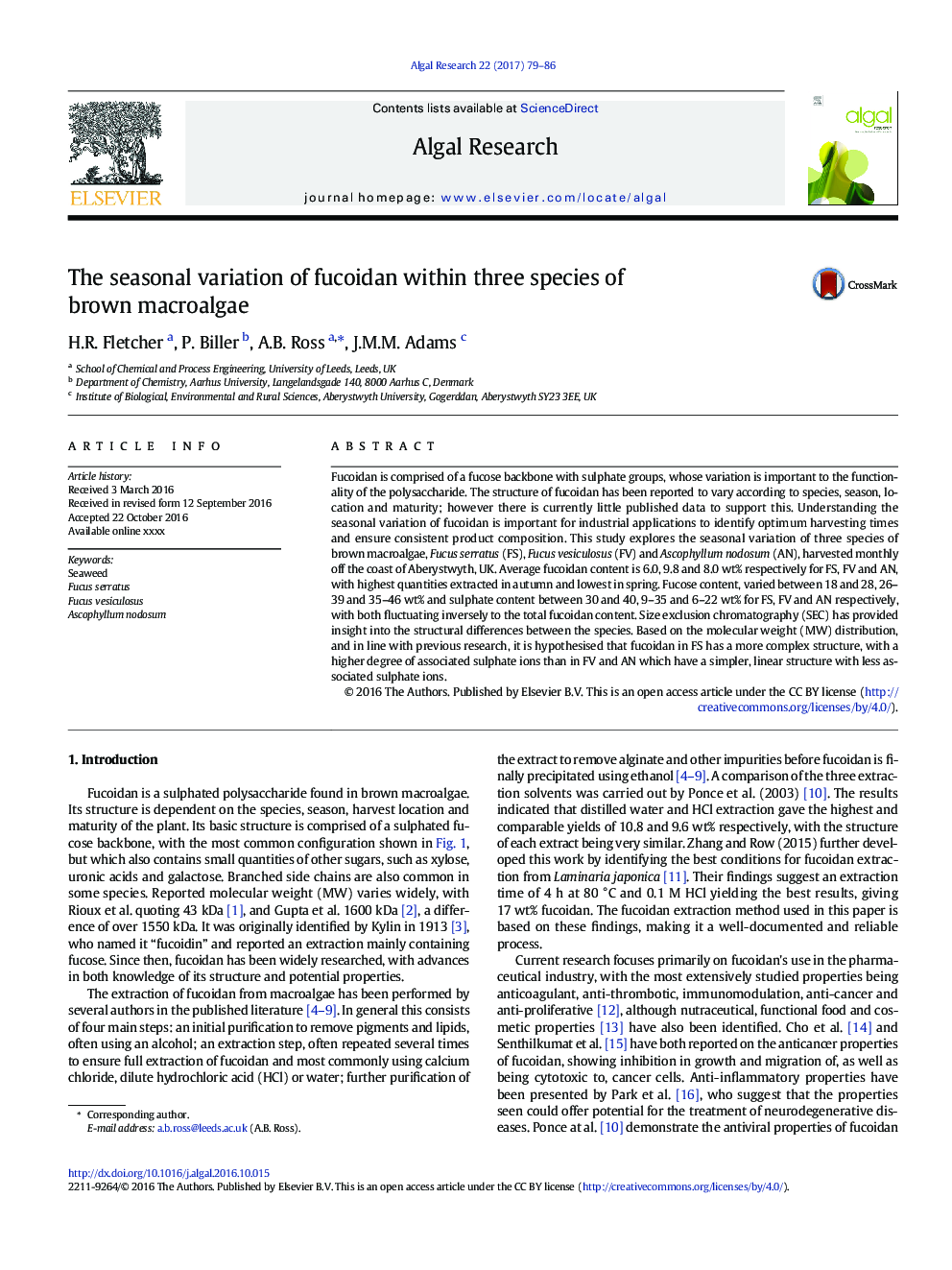| Article ID | Journal | Published Year | Pages | File Type |
|---|---|---|---|---|
| 5478434 | Algal Research | 2017 | 8 Pages |
Abstract
Fucoidan is comprised of a fucose backbone with sulphate groups, whose variation is important to the functionality of the polysaccharide. The structure of fucoidan has been reported to vary according to species, season, location and maturity; however there is currently little published data to support this. Understanding the seasonal variation of fucoidan is important for industrial applications to identify optimum harvesting times and ensure consistent product composition. This study explores the seasonal variation of three species of brown macroalgae, Fucus serratus (FS), Fucus vesiculosus (FV) and Ascophyllum nodosum (AN), harvested monthly off the coast of Aberystwyth, UK. Average fucoidan content is 6.0, 9.8 and 8.0Â wt% respectively for FS, FV and AN, with highest quantities extracted in autumn and lowest in spring. Fucose content, varied between 18 and 28, 26-39 and 35-46Â wt% and sulphate content between 30 and 40, 9-35 and 6-22Â wt% for FS, FV and AN respectively, with both fluctuating inversely to the total fucoidan content. Size exclusion chromatography (SEC) has provided insight into the structural differences between the species. Based on the molecular weight (MW) distribution, and in line with previous research, it is hypothesised that fucoidan in FS has a more complex structure, with a higher degree of associated sulphate ions than in FV and AN which have a simpler, linear structure with less associated sulphate ions.
Related Topics
Physical Sciences and Engineering
Energy
Renewable Energy, Sustainability and the Environment
Authors
H.R. Fletcher, P. Biller, A.B. Ross, J.M.M. Adams,
